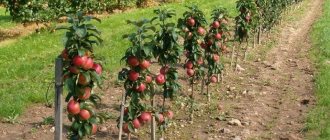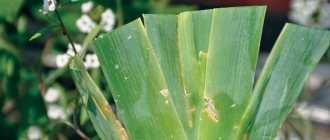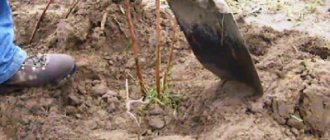Carrots are planted before winter to obtain the first early harvest at the end of July. To achieve this, you should choose suitable early varieties of vegetable crops for sowing in 2020. Their ripening period should not exceed 90 days.
When do the first shoots of carrots sown before winter appear in your region? If this is the end of April - beginning of May, then you can get the harvest at the end of July. If the snow cover melts earlier, the harvest date may shift to mid-July.
Experienced gardeners use the method of autumn planting before winter for those crops whose seeds have a dense ethereal shell. It is difficult to soak because it is soaked in oils. For the germination of carrots, parsley, dill, and chives, a large supply of moisture in the soil is required. Therefore, it is advisable to sow them in the fall of 2021, so that during the spring flood of 2021 they will quickly hatch and produce friendly shoots.
If you sow carrots before winter, you can get tasty fruits in mid-June. Moreover, most varieties are very juicy and aromatic. Early carrots are a favorite ingredient for making salads, juices, vegetable purees and other dishes. It can be used in processing to prepare preserves. All the subtleties of sowing carrots before winter can be learned from the proposed material. These recommendations are suitable for residents of the Moscow region, Volga region, Urals and Central Siberia.
Pre-winter planting of carrots allows you to reduce the amount of work in the spring
Why is this worth doing?
Growing carrots using the autumn planting method has its advantages. The biggest one is high yield. At the same time, the fruits are very juicy and tasty. Early root vegetables are larger and more flavorful. The fact is that the seeds begin to germinate as soon as the snow melts and the sun’s rays begin to warm the soil. At this time, there is a lot of moisture in the soil, which is necessary for the normal development of young shoots. The first friendly shoots appear even in early varieties 8 weeks after planting. For sowing before winter, only frost-resistant hybrids are used, which have a low percentage of seeds freezing. In this case, the first fragrant carrots will appear approximately 2 weeks after the snow layer melts.
There are also disadvantages to planting before winter. The biggest one is that vegetables are not suitable for long-term storage. It is better to use it for food immediately. Also, when planting, you need to choose seeds of suitable varieties, otherwise they will freeze and die.
Choosing the right place for sowing carrots in the fall
Advantages and disadvantages of autumn sowing
If you have never planted vegetables in the fall before winter, then carrots are the most suitable option for this. But before you decide to take such an important step, you need to analyze the strengths and weaknesses of this method.
| pros | Minuses |
| Early harvest. | Due to possible losses in winter, seed consumption increases by 20-30%. |
| Carrots will grow more tasty and juicy due to the short growing season. | The cost of seeds of winter varieties is an order of magnitude more expensive than regular ones. |
| In place of the harvested carrots, you can plant greens or lettuce suitable for crop rotation. | Grown root vegetables do not store very well. |
| There is less risk of crop damage by pests. | Autumn carrots are prone to bolting. |
| Saving time in spring. All you have to do is plant late varieties suitable for long-term storage. | The site should be dry and located on a hill. Otherwise, even the slightest stagnation of water will lead to rotting of the roots and loss of harvest. |
| In the event of a very frosty winter, there is a risk of losing seeds and future harvests. |
Suitable varieties – frost-resistant and early
To sow carrots before winter, we recommend choosing seeds of frost-resistant and early varieties. Here are the carrot varieties for planting before winter in the fall of 2021:
- "Beauty Maiden" - tasty and juicy fruits. Carrots of this variety are perfect for making juices and salads. She is big and sweet.
- “Nantes 4” - a hybrid suitable for growing even on heavy soil. It is not whimsical, tolerates severe frosts well, so there is a low percentage of seed death in the winter season. In spring, plants sprout quickly. The fruits we get are tasty and dense.
- "Losinoostrovskaya 13" - medium-sized root vegetables. The variety is resistant to fungal and other infections. The fruits are tasty, have a bright aroma and pleasant sweetness.
- “Vitaminnaya 6” is an unpretentious variety of carrots with high resistance to frost. Gives a large harvest and grows in almost any climatic conditions. It rises quickly. Produces orange fruits without bitter taste and greenness.
After choosing a variety, you need to sow the seeds in the ground.
Features of autumn planting carrots
Before planting carrots in the fall, you need to carefully remember or find out what was sown in the previous three years in this place. It is advisable that these are not celery: dill, parsley and others. They will attract uninvited guests - pests. And also the previous plants completely depleted the soil and deprived it of all fertilizing properties. It would be better if there were potatoes, cabbage or carrots here before. Before planting, you need to remove all the tops and thoroughly loosen the soil.
When to plant carrots before winter
It is difficult to determine exactly when to plant carrot seeds before winter, but you need to be guided by the local climate (when permanent snow cover is established). Deadlines in the Moscow region, Siberia, the Urals and other regions of the country change annually. It all depends on the climatic conditions of the region. Thaws are unfavorable for planted seeds, since at this time they can germinate and die in frost. Therefore, before sowing, the temperature should be kept within the range from -5 to +2 degrees for several weeks. If the temperature rises above +2 degrees, the seeds will germinate and die in severe frost. But planting is also useless if the temperature is below -5. In such conditions, the seeds simply freeze.
Before winter sowing of carrots begins, the cold should last at least 2-3 weeks. The ground should freeze a little. The optimal time from year to year is considered to be the middle - end of November. In cold regions it is possible a little earlier. Thus, in the Urals, the timing of sowing carrots in the fall is usually dated to mid-October; in Siberia, sowing can continue until the end of this month, and in warmer regions of the Volga region, planting can be postponed until the first half of November.
Fertilizers for carrots - keep it in moderation
At the same time, digging up the soil, apply fertilizers. Fresh manure is not suitable in this case, since after applying it, carrots can only be sown in this place after two years. Otherwise, the carrot tops will turn out tall and thick, but the roots will be clumsy and branchy.
Fertilizers for carrots are prepared as follows: per square meter of bed is required
- 2-4 kilograms of humus (one fourth of a bucket)
- A tablespoon of superphosphate
- Half a tablespoon of potassium salt
If the soil is too acidic, it can be neutralized by adding wood ash. Poor soils should be additionally fed with nitrogen fertilizers: less than a tablespoon per square meter of soil. There is no point in exceeding the specified dosage of mineral fertilizers: this will not affect the yield in any way. When digging, sand or half-rotten sawdust should be added to heavy, clayey soil.
How to properly prepare a garden bed?
In order for carrots to germinate quickly in the spring, grow healthy and tasty, observe certain conditions for growing them before winter. First of all, you need to prepare the bed. The soil required is light, loose and nutritious. We do not recommend planting carrots on ridges before winter, since in the spring the seeds will be washed away by moisture.
The crop can be planted after cucumbers, tomatoes or potatoes. We harvest the crops and begin to properly prepare the bed. To do this, loosen the soil and add mineral fertilizers. Do not use organic matter, as it has a bad effect on the development of root crops. Prepare the soil by the beginning of October and allow it to rest a little before sowing the seeds.
Choose a sunny place. This is necessary so that the layer of snow melts off as early as possible in the spring. High humidity is not dangerous for young shoots, but is even beneficial. In such conditions, carrots develop faster, and their fruits are very juicy and nutritious.
Care after landing
After sowing in late autumn, no care is needed. You can only cover the bed with spruce branches or throw brushwood for snow retention. If your region has snowless winters, then lay agrofibre on top, folded in 2–4 layers, press its edges with bricks or stones. In the spring, as soon as the ground thaws, remove the cover. To get a super early harvest, cover with agrofibre in one layer, lifting it on the arcs. In the future, grow carrots in the same way as when sowing in spring.
Agricultural technology for winter sowing
There is no need to soak or germinate the seeds before sowing them. Otherwise, the carrots will sprout in late autumn and die from the winter cold. To immediately determine where the vegetable is planted between the rows, gardeners plant radish or lettuce seeds, which sprout faster than carrot sprouts appear. The agricultural technology for winter sowing of carrots is quite simple and even a novice gardener can do it. First, let's prepare the furrows. As mentioned earlier, there is no need to plant in ridges before winter, as they will be washed away by the spring melting of snow. Makes several rows in the prepared bed. If the soil is heavy, then the seeding depth is 1 cm. On light soils and in dry areas, planting material is planted at a depth of 3-6 cm.
Sprinkle warm soil over the seeds. It is prepared in advance, leaving it for about a day in a warm room. Cover the planting with 2-3 cm of peat or humus and compact it well. If the soil is not compacted, it will be blown away by the cold wind and the seeds will die. As soon as the first snow falls, it is raked for planting and covered with spruce branches.
Soil preparation
The area for sowing carrots must be prepared in advance, before the cold weather arrives, when the soil has not yet frozen. So, 1-1.5 months before planting, you need to perform the following steps:
- Clean the area after the previous crop, removing all weeds and plant debris.
- Conduct a deep digging of the bed with a spade blade (30-40 cm). In this case, it is worth fertilizing the soil, but avoiding organic matter in the form of manure. It is best to add 2-4 kg of humus, 20-25 g of superphosphate and 10-15 g of potassium salt per 1 square meter to the soil. m. Mineral fertilizers can be replaced with ash, since it contains phosphorus, potassium, magnesium, calcium and other elements. Apply it at the rate of 1 glass per 1. sq. m. m. Select other fertilizers depending on the type of soil:
- In acidic soil, be sure to add either 1 glass of wood ash, or 150 g of dolomite flour, or 300-400 g of chalk per 1 square meter. m, since they neutralize the acidic environment;
- heavy, clayey soils should be diluted with sand or half-rotten sawdust, as they will make the soil more airy and loose, but fresh sawdust and other undecomposed components of organic nature must be discarded, otherwise they will attract carrot flies that are dangerous to root crops;
- Poor soils should be additionally fertilized with nitrogen fertilizers at the rate of 1 tbsp. l. per 1 sq. m, but no more, since exceeding the specified dosages will not enhance the plant’s productivity, but will lead to cracking and deformation of the root crops.
- After digging, loosen the soil deeply and make grooves in it to a depth of 4-5 cm and every 15-20 cm. When the time comes to sow the seeds, the grooves will compact and settle, so the depth will not exceed 2-3 cm.
- Cover the prepared area with film or other material that does not allow moisture to pass through, so that the bed is not washed away by rain and the ground is not blown away by the wind. The sides of the shelter must be secured with bricks, boards, stones or any other heavy material that can be found at hand.
You can sow any green manure on the site and, when it grows to 15-20 cm, embed it in the soil, since carrots love a high humus content.
Carrot seeds can simply be sown on the surface of the soil without making any furrows. The area will simply need to be sprinkled with pre-prepared loose soil and covered with spunbond, which can be removed in the spring when the snow melts.
However, even when sowing seeds in furrows, it is necessary to prepare a dry mixture in advance to seal them. Sowing work is carried out at a time when the soil is already cold, and in some places it even freezes into clods, so it will not be possible to evenly cover the seeds with it.
While the weather is warm, you need to prepare dry soil, sifted through a coarse sieve, as well as compost, humus or a mixture of them with peat at the rate of 4-5 buckets per 1 square meter. m (it is advisable to sort the composition with your hands so that there are no lumps, and dry in the sun). Pour the workpieces into boxes or bags, which should be kept in a dry and warm place, for example, in a frost-free barn.
If the dry mixture for sowing the seeds is not prepared, you will have to purchase ready-made peat-based soil at the garden store. A crust does not form on it, so it will not be difficult for sprouts to break through.
You can learn about the method of preparing a bed for autumn sowing of carrots from the video below:
What to do in spring?
The spruce branches are removed as soon as the snow melts off of them. This must be done, otherwise the bottom layer will melt more slowly. This will affect the ripening period of carrots. At the same time, you can remove some of the snow from the garden bed, if there is a lot of it. This way it will melt faster. In the spring, when the first shoots appear, we begin to remove weeds and loosen the soil as it dries.
Weeding is a must. If you plant lettuce or radishes between the rows, the procedure is required much less frequently. At the same time, they fight pests and prevent the occurrence of insects and pathogenic bacteria. If during planting you did not use a special tool for sowing carrot seeds (you can set a step on it), then the young plants need to be thinned out twice. The first time the real leaves appear. You need to thin out so that there is 2 cm between the carrots. This distance is increased to 4 cm during the second procedure - after about 20-25 days.
Otherwise, carrots are a low-maintenance plant. The only disadvantage of winter planting is that it is not stored for a long time. But at the very beginning of summer, delicious, nutritious fruits will appear in the garden. They are ideal for freshly squeezed juice or salads.
Proper spring care for winter carrots
First of all, with great diligence you need to monitor the cleanliness of the beds where carrots are planted. The first weeding should occur before the green part of the fruit emerges. After all, weeds can be destructive to carrots. You should always keep the soil loose. Because as soon as the soil hardens and compacts, it contributes to the curvature of the fruit. It is also important that they grow far apart from each other so as not to get in the way.
Now about spring care. When the snow melts, the spruce branches can be removed. But the seedlings still cannot be left outdoors. They need to be covered with polyethylene and thereby protected from pests and night frosts, which can unexpectedly occur regardless of warm days. As soon as the seedlings have emerged, you can count 2 weeks and treat them against pests for the first time. Fertilizers should be fed when there is already a strong leaf part, about 3-4 leaves.
It is best to fight weeds manually in order to taste the first harvest in late spring. Since when using herbicides, the fruits can only be consumed after 4 months. Because they are dangerous to humans. Despite the presence of melt water, the seedlings also need to be watered frequently so that the crop does not die. When processing beds, it is necessary to thin out the seedlings; the fruits should not interfere with each other’s growth. Of course, experts initially advise planting them at a distance of approximately 15-20 cm from each other.
I share with you some little tricks of gardeners and gardeners))
Predecessors of winter carrots
Crop rotation is a decisive criterion when choosing a place to plant carrots, regardless of the time of year. You should not plan carrot beds where they grew last season. This is due to the fact that when growing a monoculture, pests accumulate in the ground and attack plants of a particular species.
The most suitable predecessors for carrots are the following crops:
- tomatoes, potatoes and all nightshades;
- watermelon, cucumbers and all melons;
- cabbage;
- onion and garlic;
- peas and all legumes;
The least successful predecessors include dill and parsley. This is due to the fact that parsley creates comfortable conditions in the soil for the growth of pathogenic bacteria. As a result, the carrots begin to hurt and grow small and dry.











